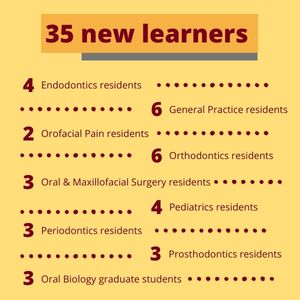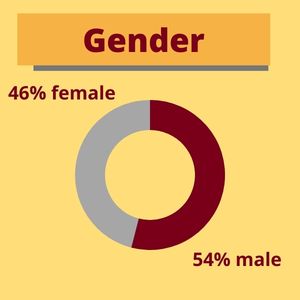35 incoming learners join advanced education programs
The School of Dentistry welcomes 35 learners across specialty programs for the upcoming academic year.
Residents come to the School of Dentistry with dental degrees from the United States, Canada, Greece, Nigeria and Egypt.
Depending on the program they enter, these new graduate and advanced education earners begin their time at the School of Dentistry at various points throughout the summer. They include four residents in endodontics, six in general practice residency, three in oral and maxillofacial surgery, four in pediatrics, three in prosthodontics, two in orofacial pain, three in periodontics, six in orthodontics and three graduate students in oral biology. Those pursuing oral biology degrees include one receiving a master of science, one pursuing a PhD and one pursuing a dual DDS/PhD.
This gifted group of students speaks a total of 18 languages, with 17 residents speaking two or more languages. Two residents speak a total of four languages, while four speak a total of three languages each.
Nefeli Protogeraki begins her periodontics residency as one of the 35 new researchers. After growing up in Greece, she attended the School of Dentistry in Athens and then pursued research at Newcastle University. Through those experiences, she fell in love with dentistry—and periodontics in particular.
“The periodontics residency at the University of Minnesota is one of the best programs worldwide, combining intense clinical training while offering the opportunity to carry out research,” she explained, citing her excitement at the prospect of researching, participating in conferences and teaching while practicing.
After a few years away from school, Protogeraki is looking forward to gaining clinical experience, meeting her fellow residents, exchanging ideas and experiencing an American university for the first time.
“I have worked really hard, and made a lot of sacrifices to be able to attend this program, but I am confident it will be worth every one of them, “ she said. “I feel very privileged to be given the opportunity to be here, and I will make the most of it.”
We offer our sincere congratulations and a warm welcome to the incoming class of graduate and advanced education learners who begin their studies this summer.



